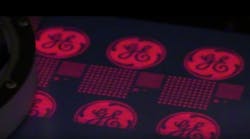Back in April the DOE announced plans to form the DOE Municipal Solid-State Street Lighting Consortium and now the organization is discussing its initial steps as well as longer-term goals. Expect an announcement of members that will make up the Executive Committee as early as next week, and the first subcommittee will focus on developing a solid-state street light standard for lighting performance.
The DOE held a webcast to provide the information. Jim Broderick, Program Manager in the DOE's emerging technologies sector, kicked of the event stating, "The consortium is actually going to help people come up the learning curve quite quickly." Brodrick quickly turned the program over to Edward Smalley of Seattle City Light who will also serve as the director of the consortium. Smalley stated, "Let's minimize the risk and cost associated with independent efforts and let's get educated together."
About the consortium's mission, Smalley stated, "It's really to get us all educated in how to identify products that are right for the application. We really want to be able to talk about applications."
Smalley identified goals for the consortium, stating "We want to reduce the needless duplication of efforts among members. We want to look at reducing the risk of making large scale mistakes. We want to be able to bring the end users up to speed as quickly as possible and their ability to identify good products and proper applications. We want to reach out to members with limited budgets." Smalley emphasized that final point noting that the consortium needs to help all of the smaller municipalities that have a modest number of street lights.
Smalley indicated that the first priority is establishment of an Executive Committee. He is looking for 8 to 10 members and asked webcast attendees for nominations. The Executive Committee will be limited to people who are Primary Members of the consortium. Primary Members are from municipalities, power providers, building owners, and other decision makers. Smalley is looking for members that are "fully sponsored" meaning that the member has support from someone such as the mayor of a city that is committed to sold-state street lighting.
Smalley summarized the first steps that the Executive Committee will take stating, "We want to identify accurately the different needs of the consortium. We want to organize, select and prioritize demonstration sites. We will develop guidelines for subcommittees, make recommendations for subcommittee establishment, and assist in identifying tools needed for members." Smalley indicated that the first subcommittee will focus on establishing a performance standard for solid-state street lighting. Advisory Members of the consortium that come from organizations that have exhibited a commitment to improve lighting quality and power efficiency are eligible for subcommittee service.
It's worth noting that the consortium isn't starting from scratch. Smalley noted that other programs such as DOE's Gateway have good sample tools. He expects the consortium to work hand-in-hand with Gateway and that the consortium will do project demonstrations that follow Gateway's model.
Gateway is a DOE program that's administered by the Pacific Northwest National Laboratory. Bruce Kinzey, Gateway demonstration program manager and senior research engineer at PNNL, provided some additional information stating, "Gateway's purpose is to demonstrate new state of the art products in real world applications that meet the three criteria of saving energy, matching or improving illumination, and being cost effective for the user."
Kinzey will help select and organize demonstration projects. He noted that the consortium will need to establish a formal process to select products for review and sites to do the demonstrations. He indicated that many sites have already volunteered and he expects many manufacturers to offer up products for review.
Addressing the demonstration process, Kinzey stated, " A very important aspect of the evaluation process is collecting user feedback on the illumination quality of the new lights relative to what they replaced." He provided examples such as residents of a neighborhood with new street lights that would be surveyed in detail once a project is in place.
During the Q&A session that followed the webcast, Kinzey was asked about the number of demonstration projects that the consortium might undertake in a year. His long answer was perhaps 6 to 10, although that number might depend on many factors. In fact, some projects might be fielded in multiple geographic locations to account for different environments, but count as a single project.
As for next steps, Smalley hopes to have the Executive Committee identified by May 17. The first general meeting of the consortium will likely be held the last week in September in conjunction with the Street and Area Lighting Conference that's scheduled for Huntington Beach, CA near Los Angeles.
In his keynote address at the Lightfair conference on May 11, Brodrick mentioned the consortium and noted significant interest. He said, "We've got 70 to 80 cities already signed up.




